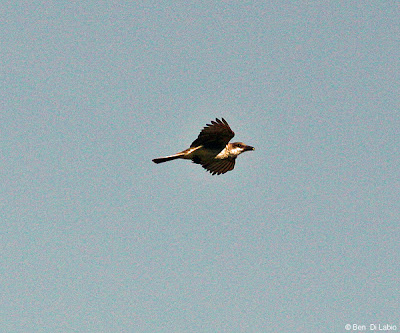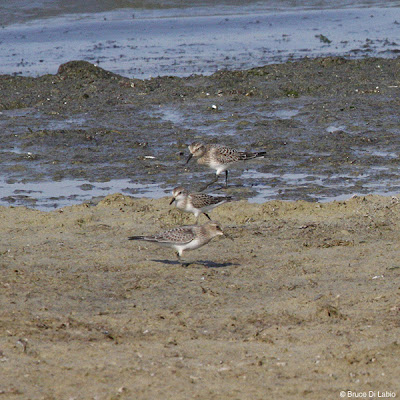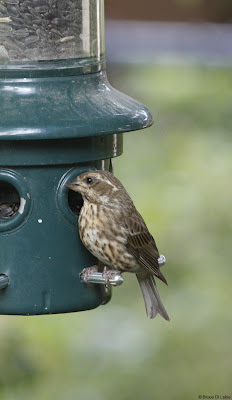The birding at Shirley's Bay was good today with 7 juvenile Baird's Sandpiper and 2 juv. Red-necked Phalarope. The water levels along the Ottawa River are up but still lots of suitable habitat. Also present were 15+ Spotted Sandpiper, 7 juv. Lesser Yellowlegs, 11 juv. Semipalmated Sandpiper, 4 juv. Least Sandpiper and 1 Killdeer. In the back bay area I observed 3 Caspian Tern, 1 adult Bald Eagle, 4 Osprey, 3 Great Egret, 1 Northern Harrier and a Merlin. A high count of 122 Wood Ducks was noteable. Lots of land bird activity along the causeway including Yellow-rumped Warbler , Cape May Warbler,Yellow Warbler, Common Yellowthroat, Eastern Phoebe, Eastern Kingbird, Northern Flicker, Downy Woodpecker, Red-eyed Vireo, Warbling Vireo, Song Sparrow and Gray Catbird.
At Andrew Haydon Park (Ottawa Beach) 3 juvenile Bonaparte's Gulls were resting in a flock of Ring-billed Gulls but no shorebirds were found. Lots of activity at Deschenes Rapids including 7 Great Black-backed Gull, 8 Caspian Tern, 40+ Common Tern, 120+ Double-crested Cormorant, 7 Black-crowned Night-Heron, 2 Baird's Sandpiper, and 17 Great Egret.
Directions: Shirley's Bay: From Ottawa take Hwy. 417 west to the Moodie Drive
exit and turn north (right) on Moodie Drive and continue to Carling Ave. Turn
left at Carling Ave. and follow Carling to Rifle Road. Turn right (north) on
Rifle Rd. Park at the lot at the end (boat launch). Walk back to the road, and
continue through the gate on the Department of National Defense property. There
is a trail on your right (clearly marked with vehicle "No Entry" signs) which
heads into the woods, and, eventually to the causeway. There is lots of POISON IVY
along the causeway.
**** PLEASE NOTE**** YOU MUST OBTAIN PERMISSION FROM THE
RANGE CONTROL
OFFICE BEFORE ENTERING THE SHIRLEYS BAY CAUSEWAY AREA-- Call
(613) 991-5740 and
request permission to visit the area for birding.
 |
A female Deer with 3 young. Triplets are very unusual but do occur. |
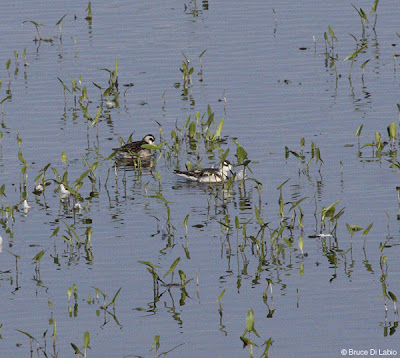 |
Red-necked Phalaropes feeding at Shirley's Bay. |
 |
A female Downy Woodpecker sits for a moment. |
 |
After a few minutes of pecking, the Downy Woodpecker extracts an insect. |
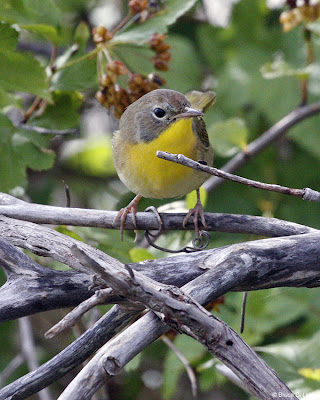 |
An immature male Common Yellowthroat was one of many species of warblers observed today at Shirley's Bay. |
 |
Cape May Warblers have been reported from numerous locations in the Ottawa district this fall. |
 |
A male American Redstart was still in full song. |
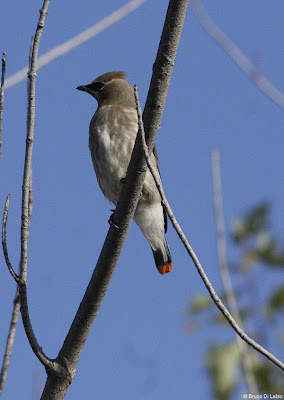 |
This juvenile orange variant, Cedar Waxing, has a orange tail band instead of a yellow. |
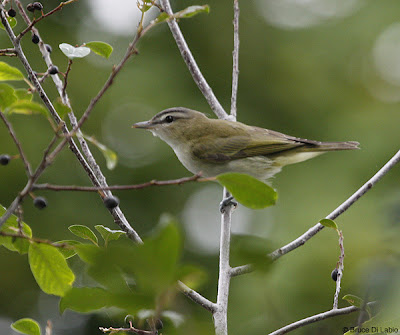 |
The Red-eyed Vireo is the most common vireo in eastern Ontario |
 |
Bird activity at our feeders is picking up and we now have Purple Finch and House Finch along with American Goldfinch and a few Pine Siskin. |





